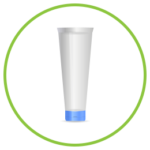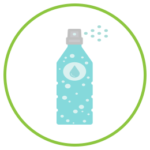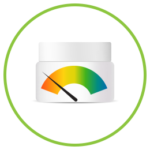The focus of this module is on the skin’s delicate environment and how to improve/sustain proper skin barrier function.
The Importance of a Competent Barrier
The skin barrier (outermost layer of the skin, also known as the stratum corneum) is breached on a regular basis and the skin’s ability to efficiently repair the barrier is an essential component of healthy skin.
Unfortunately, individuals affected by various inflammatory skin conditions (such as seborrheic dermatitis, atopic dermatitis and rosacea) are known to have significant defects in this important process [1, 2].
In the case of seborrheic dermatitis, most popular treatment approaches primarily focus on microbial/fungal reduction (anti-fungals and antibiotics) or immune response suppression (corticosteroids). However, perhaps focusing on restoration of the skin barrier may hold the most potential; as this approach may eliminate the need for treatments that technically focus on issues that occur only after initial barrier compromise.
Last module’s objectives actually focused on the outer most layer of the skin barrier (the acid mantel). In this module module we’re going a little deeper and the focus is on improvement of various other components of adequate skin barrier function.
Expected Outcomes
Maintaining adequate barrier function can lead to:
- Improved microbial resistance
- Reduced levels of local inflammation
- Reduced microbial/fungal (malassezia) activity
- Improved skin barrier function and stability
- Improved sebum production and composition
Additional Information
Understanding the skin barrier and finding ways to directly improve it’s function can bring quick improvements and can be highly rewarding.
Ideas to Improve Barrier Function

Barrier Repair Solutions
Finding a suitable barrier repair formulation can aid the natural repair process and resolve many of the underlying factors in inflammatory skin disease.

Utilizing Cold
Cold water may help reduce irritation potential of existing skin care regimens and temporarily mask the symptoms of skin barrier deficiencies.

Carbonated Water
The slightly acidic nature of carbonated water makes it a great candidate for improving barrier function and overall skin stability.
Factors to Consider

pH of Skin Care Formulations
Skin care products can effect the skin surface pH. Making sure the products you use are formulated to match the pH of healthy skin can help maintain natural barrier function and prevent disruption of the acid mantle.

Shifting Focus
Focusing on your skin issues can increase blood flow to the affected area and may be fueling the inflammation cycle. Shifting your focus away from the issue can reduce unncessary stress, reduce local inflamattion and result in more balanced blood flow to the area.
Example Daily Checklist
- Only use topical solutions that respect or improve the skin barrier
- Avoid focusing on your skin (mirror time, visual inspection and mental focus)
- Introduce cold water rinse and/or cold water baths
- Stick to topicals that respect the skin’s optimal pH
If you use topical solutions that are either too acidic or two alkaline, the skin must work hard to restore balance. Sticking to solutions that have a similar pH to health skin, can drastically reduce the chances of barrier disruption. - Spray skin with plain carbonated water post washing
Carbon dioxide is used to produce the bubbles found in carbonated water and it’s presence causes the water to become slightly acidic. Studies have shown that topical application can help improve barrier function.
Ending Remarks
This is one of the final modules of the program. The next module is going to wrap things up and highlight some of the most important objectives covered throughout the program.

 Getting Started
Getting Started Improving Digestion
Improving Digestion Achieving Dietary Balance
Achieving Dietary Balance Controlling Stress and Anxiety
Controlling Stress and Anxiety Lifestyle Adjustments
Lifestyle Adjustments Reducing Irritation
Reducing Irritation Improving Barrier Function
Improving Barrier Function